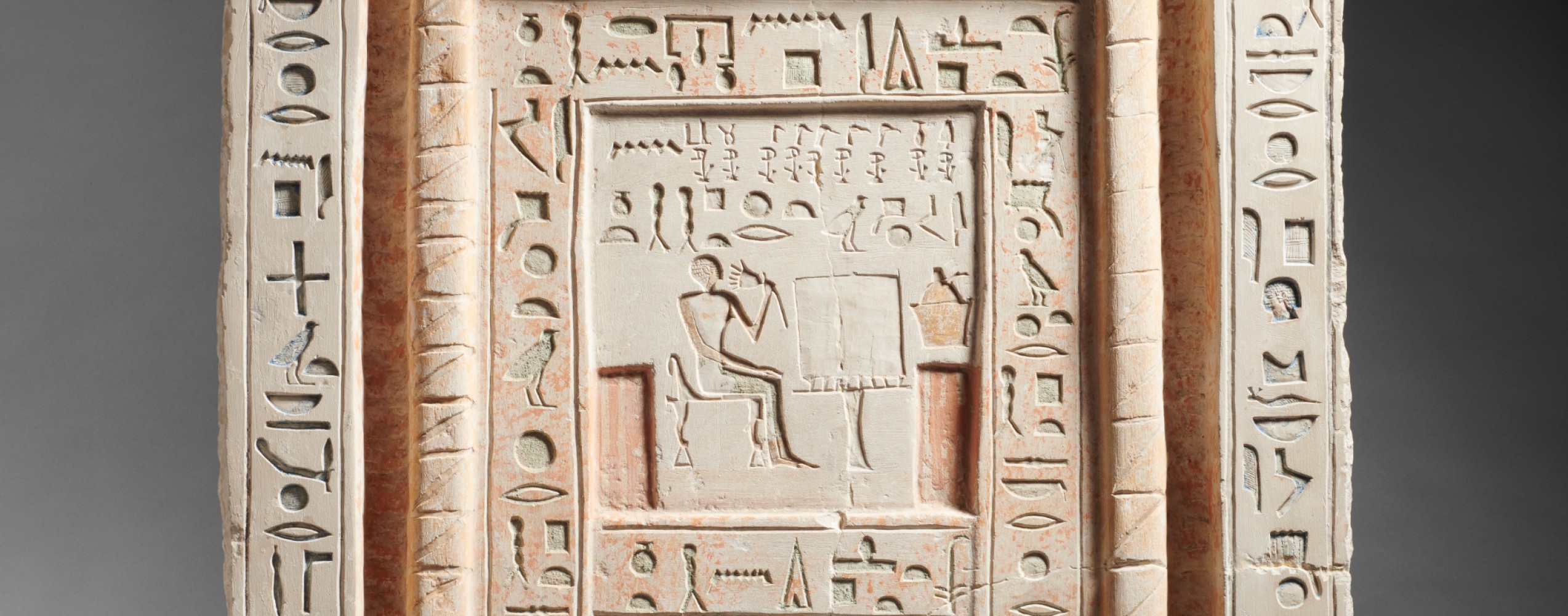
Read, watch and play
Funerary stela of the priestess Henut
This stela is of very fine quality and most likely comes from the vast necropolis of Saqqara, located to the south of modern-day Cairo. It was carved toward the end of the Old Kingdom, during the sixth dynasty, a time when famous kings Pepi and Teti ruled.
False-door funerary stela of Henut, priestess of Hathor
Old Kingdom, 6th dynasty (2323 - 2150 BC)
Provenience unknown, probably Saqqara
Limestone, polychrome decoration
109.9 x 64.8 cm
FGA-ARCH-EG-0254
Narrated by Dr Xavier Droux, Curator of the Archaeology Collection
This beautifully crafted funerary stela is made of fine limestone and bears remarkable polychrome painted decoration. The hieroglyphic text invokes the funerary gods Anubis and Ptah-Sokar, and repeats the name and title of the deceased several times. She is the lady Henut, a priestess of Hathor, a goddess of love, maternity, joy here shown as a cow.
Shaped as a so-called “false-door”, the stela allowed the spirit of the deceased to symbolically move between the burial chamber and the offering chapel. Henut could therefore virtually enjoy the offerings brought for her, allowing her to survive in the afterlife.
Discover our newsletter
We just sent you a verification email. Please click the link in the email to complete the subscription process.


All rights reserved. Without authorization from ProLitteris, the reproduction and any use of the works other than individual and private consultation is prohibited.
